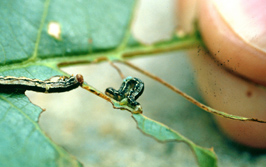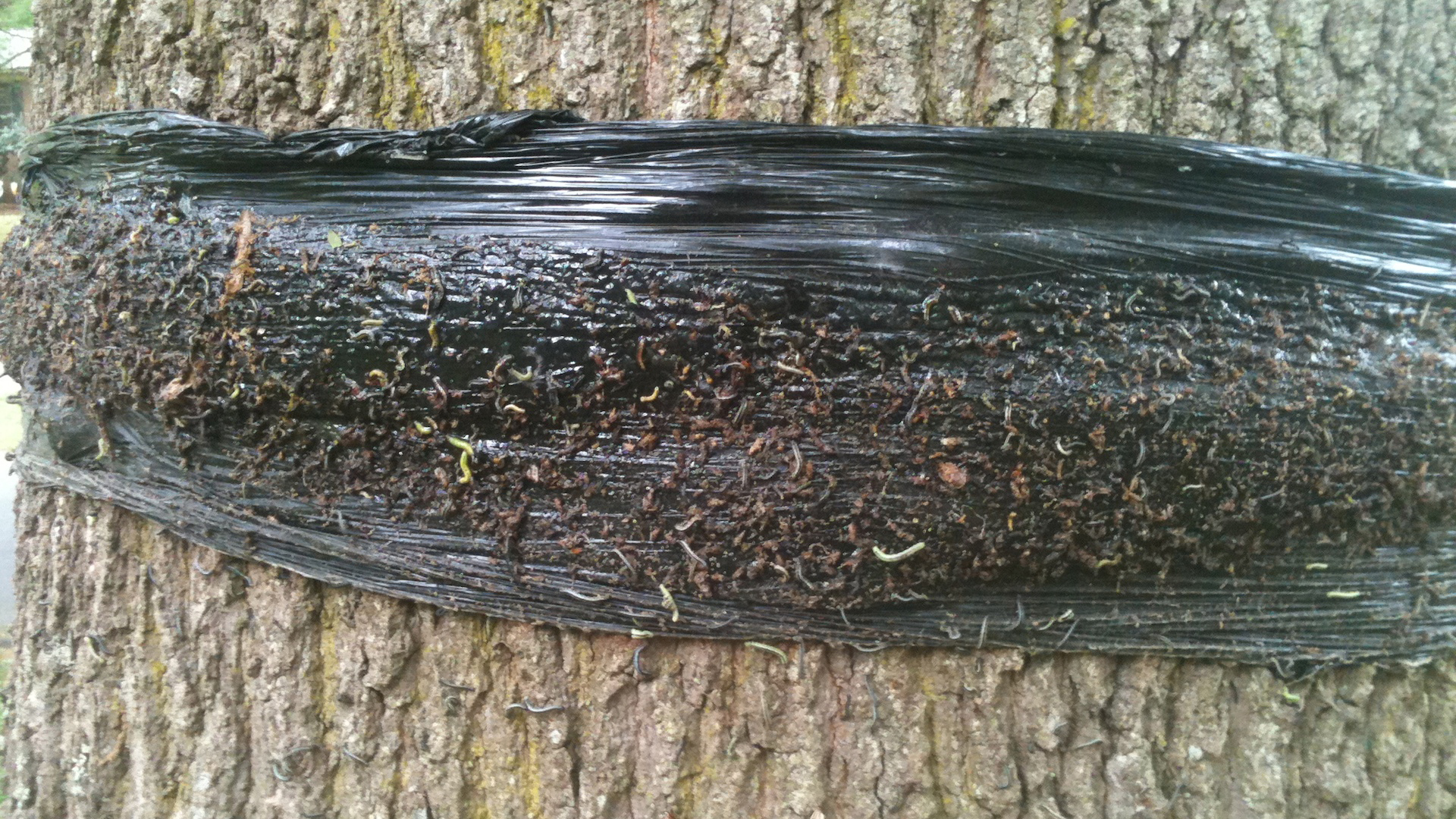
It’s that time of year again. The Fall Cankerworms begin their trek from beneath the ground up to your tree canopy to lay their eggs. Cankerworm larvae (aka an inchworm) feed on your trees’ leaves in the Spring and can eventually destroy your trees and shrubs. Below you’ll find some helpful information on Cankerworms in Charlotte and why NOW is the time to take steps in preventing these insects from destroying your trees. (excerpted from the Charlotte-Mecklenburg Government website: http://www.charmeck.org/city/charlotte/epm/Services/Landscaping/Pages/fall%20cankerworm.aspx)
What is the fall cankerworm? The fall cankerworm (Alsophila pometraria) is an insect native to North America. It is typically found from Georgia to Nova Scotia and west to Texas. It has a four stage life cycle: egg, pupa, larva (caterpillar) and adult.
How does the fall cankerworm affect trees?
After mating in December, the female moths crawl up trees to lay their eggs on twigs and mall branches. As the trees leaf out in the spring, the eggs hatch leaving small green caterpillars to feed on the leaves. In most cases, the cankerworm will not kill the trees; however repeated defoliation can weaken trees and make them more susceptible to other stresses, such as age, drought, other insects and disease.
Once they hatch in the spring, the cankerworms can balloon to other nearby trees. They are very light and can be blown from one tree to another. This is why it is important for neighbors to organize or “band together” when applying tree bands.
Why does Charlotte have a fall cankerworm problem?
For the past 20 years, the cankerworm population in Charlotte has continued to grow. Natural controls have not been adequate to bring the cankerworms to a level that isn’t harmful to our tree canopy. Aerial spraying in 1992, 1998 and 2008 and other natural factors reduced the population for several years. The City started a banding program on street trees, while requesting homeowners and businesses to cooperate in 1990. The banding efforts have continued for the last 16 years. Entomologists cannot explain why the cankerworm populations continue to increase but the City’s large concentration of old willow oaks may promote the infestation.
What effect will tree banding have on the cankerworm?
Tree banding in November and December is an effective way of controlling the cankerworm. By applying a glue barrier to the tree trunk, the wingless cankerworm moths are trapped as they climb the tree. For best results, trees should be banded around the last week of November. It is important to wait until most leaves have fallen from the trees so they don’t get stuck to the tree bands.

More information on the Fall Cankerworm:
